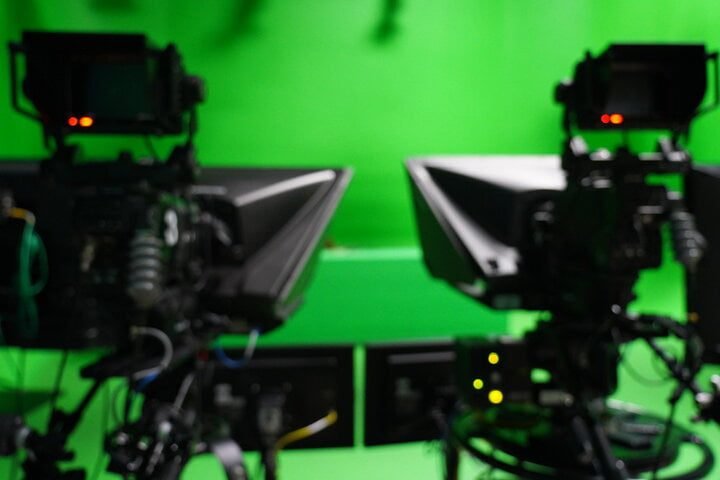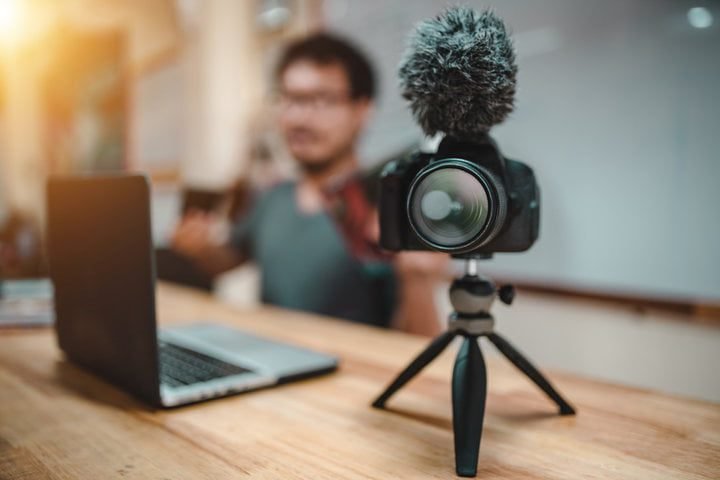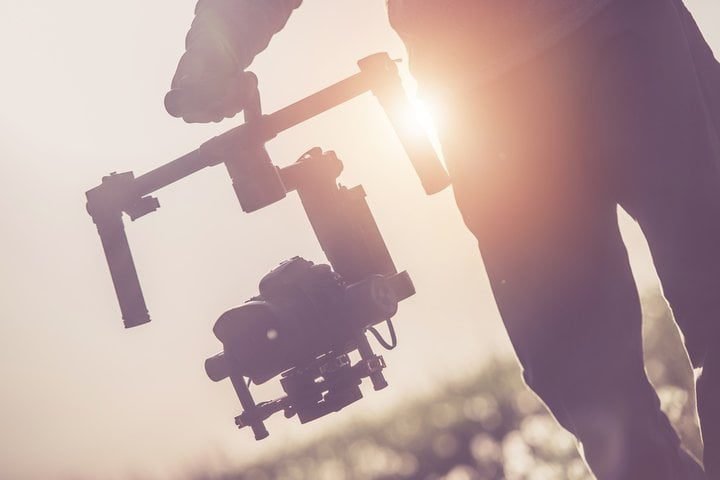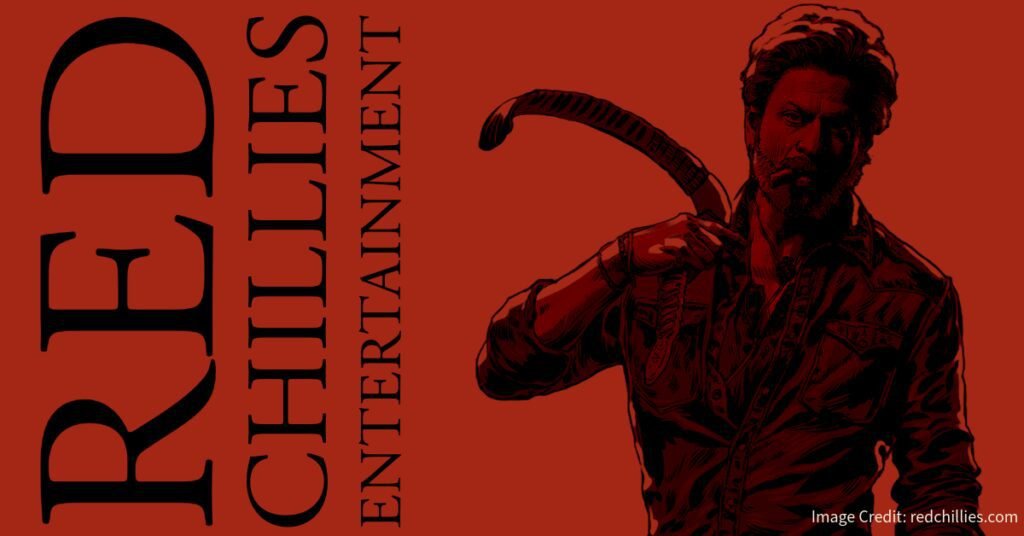Understanding the Fundamentals of Video Production
Video production is an art form that marries creativity with technical mastery. It is the process of ideation, planning, shooting, and editing visual content to convey a message, tell a story, or evoke emotions. This all-round craft requires meticulous attention to detail, from selecting equipment to the execution of post-production techniques.
In This Article
The fundamental understanding of video production includes the following:
- The different stages of video production
- The basic equipment and software needed for video production
- Essential video production techniques
We will also discuss some common video production mistakes to avoid and provide tips for creating high-quality videos.
The Stages of Video Production
Video production can be dissected into three phases: pre-production, production, and post-production. Each phase is a critical component of the overall process, and its successful execution contributes to creating a compelling video.
Pre-production
The pre-production stage is where you plan your video. This includes developing your video concept, writing a script, and creating a storyboard. You must also decide on locations and gather any necessary props or costumes.


Production
The production stage is where you shoot your video. This includes setting up your equipment, filming your shots, and recording your audio. Being well-prepared for the production stage is essential, as mistakes can be costly and time-consuming.
Post-production
The post-production stage is where you edit your video. This includes assembling your shots, adding music and sound effects, and colour-grading your footage. In the post-production stage, you can bring your video to life and make it look its best.
Essential Video Production Techniques
There are several essential video production techniques that one should learn, such as:
- Shot composition: This is the art of arranging the elements in your shot to be visually appealing and tell a story.
- Camera movement: This involves moving your camera during a shot to create a sense of dynamism and interest.
- Lighting: Lighting can create different moods and atmospheres in your video.
- Audio: Good audio is essential for any video. Use a high-quality microphone and record your audio in a quiet environment.


Common Video Production Mistakes to Avoid
Here are a few common video production mistakes to avoid:
- Poor lighting: Bad lighting can make your video look unprofessional and unappealing.
- Poor audio: Poor audio can make your video challenging to watch and understand.
- Shaky footage: Shaky footage can be distracting and nauseating for viewers.
- Long, boring shots: Avoid using long, boring shots that don’t add anything to your video.
- No clear focus: Make sure your video is clear and you are trying to achieve something specific.
Tips for Creating High-Quality Videos
Here are a few tips for creating high-quality videos:
- Plan your video carefully: Don’t just start shooting without a plan. Take the time to develop your video concept, write a script, and create a storyboard.
- Use high-quality equipment: If you can, invest in high-quality video and audio equipment. This will make your videos look and sound more professional.
- Learn basic video production techniques: There are several essential video production techniques that you should learn, such as shot composition, camera movement, lighting, and audio.
- Edit your video carefully: In the post-production stage, you can bring it to life and make it look its best. Take the time to edit your video carefully and remove any unnecessary footage.
- Get feedback from others: Once you have finished editing your video, show it to others and get their feedback. This can help you identify any areas that need improvement.
Essential Equipment and Gear for High-Quality Videos
Having the right equipment and gear is essential for creating high-quality videos. While you don’t need to spend a fortune, there are some essential items that you will need to invest in. In this section, we will discuss the essential equipment and gear for video production, including:
- Cameras
- Lenses
- Microphones
- Lighting
- Editing software
- Computers
We will also provide tips on choosing the right equipment for your needs and budget.
Cameras


The camera is the most important piece of equipment for video production. There are a variety of different cameras available, ranging from basic consumer cameras to professional cinema cameras. The camera you need will depend on the videos you want to make and your budget.
A mobile phone camera is good enough if you are just starting out. However, if you are serious about video production, you may want to invest in a more professional camera. Professional cameras offer better image quality and more features but can be more expensive and difficult to use.
When choosing a camera for video production, there are a few key factors to consider:
- Sensor size: The sensor size of a camera affects the quality of the image it produces. A larger sensor will produce better image quality in low light conditions and will allow you to create a shallower depth of field.
- Resolution: The resolution of a camera refers to the number of pixels in the image it produces. A higher resolution will allow you to crop your footage without losing quality and will also give you more flexibility when editing your videos.
- Frame rate: The frame rate of a camera refers to the number of frames it captures per second. A higher frame rate will allow you to create smooth slow-motion footage.
Lenses
The lens is another important piece of equipment for video production. The lens you choose will affect the look and feel of your videos. There are a variety of different lenses available, each with its own unique properties.
For example, a wide-angle lens can be used to create a sense of space and depth in your videos. A telephoto lens can be used to zoom in on distant objects. A macro lens can be used to capture close-up shots of small objects.
Prime lenses have a fixed focal length, which means that you cannot zoom in or out. Prime lenses are typically sharper and faster than zoom lenses, making them ideal for low-light conditions.
Zoom lenses allow you to zoom in and out on your subject, which can be useful for a variety of different shots. Zoom lenses are typically not as sharp as prime lenses, but they can be more versatile.
When choosing a lens, there are a few factors to consider, such as:
- Focal length: The focal length of the lens determines the field of view. A wider focal length will capture a wider field of view, while a narrower one will capture a narrower field of view.
- Aperture: The aperture of the lens determines how much light it can let in. A faster aperture will allow you to let in more light, which can be helpful in low-light conditions.
- Image stabilization: Image stabilization helps to reduce camera shake. This is important if you are shooting handheld.
Microphones


Good audio is essential for any video. The microphone you use will affect the sound quality of your videos. There are a variety of different microphones available, each with its own unique properties.
For example, shotgun microphones are directional microphones that focus on the sound in front of them and reduce background noise. They are ideal for recording dialogue and other sounds that you want to be the focus of your video. A lavalier microphone is a good choice for recording interviews.
Condenser microphones are very sensitive and can capture a wide range of sounds. They are ideal for recording music and other sounds you want to capture in high detail.
The polar pattern of the microphone determines how it picks up sound. A directional microphone will pick up sound from one direction, while an omnidirectional microphone will pick up sound from all directions.
Lighting
Lighting can be used to create different moods and atmospheres in your videos. It can also be used to make your subjects look their best. There are a variety of different lighting options available, from simple natural light to complex studio lighting.
Beginners can use natural sunlight whenever possible. Natural light is free and easy to use. However, if you shoot indoors or in low-light conditions, you must use artificial lighting.
Tripod
A tripod is an essential piece of equipment for video production. A tripod will keep your camera steady and prevent shaky footage. When choosing a tripod, there are a few key factors to consider:
- Height: The tripod should be tall enough to comfortably frame your shots.
- Weight capacity: The tripod should have a weight capacity that is greater than the weight of your camera and other equipment.
- Stability: The tripod should be stable enough to keep your camera steady, even in windy conditions.
Editing software
Once you have shot your footage, you will need to edit it together to create a finished video. There are a variety of different editing software programs available, both free and paid.
Beginners may use a free editing software program like iMovie or Windows Movie Maker. These programs are easy to use and offer a variety of basic editing features. However, if you are serious about video production, you may want to invest in a more professional editing software program, such as Adobe Premiere Pro or Final Cut Pro.
Video Editing Machines
Video editing can be a demanding task, so you will need a computer that is powerful enough to run your editing software. If you are just starting, you may use an older computer. However, if you are serious about video production, you will need to invest in a more powerful computer.
Choose the Right Equipment as per Your Needs and Budget
When choosing video production equipment, it is important to consider your needs and budget. A basic setup is good, and equipment can always be upgraded later as your needs and budget change.


Strategies for Promoting Your Content and Viewer Retention
Once you have created high-quality video content, you need to promote it so that people can find and watch it. There are a variety of different strategies you can use to promote your content, including:
- Social media: Social media is a great way to promote your content and reach a large audience. Share your videos on your social media channels and encourage your followers to share them as well.
- Search engine optimization (SEO): SEO is the process of optimizing your videos so that they rank higher in search engine results pages (SERPs). This will help people find your videos when they search for relevant keywords.
- Email marketing: If you have an email list, you can use it to promote your new videos to your subscribers.
- Paid advertising: You can also use paid advertising platforms, such as Google Ads and YouTube Ads, to promote your videos.
- Create a video trailer: A video trailer is a short video that highlights the best parts of your video. You can use a video trailer to promote your video on social media and other websites.
- Use relevant keywords: When you upload your video to YouTube or other video sharing websites, be sure to use relevant keywords in the title, description, and tags. This will help people find your video when they search for those keywords.
- Create a video transcript: A video transcript is a text version of your video. You can create a video transcript using a transcription service or by transcribing the video yourself. Video transcripts can be helpful for viewers who are deaf or hard of hearing, and they can also help improve your video’s SEO.
- Collaborate with other creators: Collaborating with other creators is a great way to cross-promote your content and reach a new audience. You can collaborate with other YouTubers, bloggers, or social media influencers.
- Run contests and giveaways: Running contests and giveaways is a great way to engage your audience and promote your video content. You can offer prizes such as gift cards, products, or services.


In addition to promoting your content, it is also important to focus on viewer retention. Viewer retention is the percentage of viewers who watch your video all the way through. A high viewer retention rate indicates that your content is engaging and informative.
There are a number of things you can do to improve your viewer retention rate, such as:
- Start with a strong hook: The first few seconds of your video are critical. Start with a strong hook that will grab the viewer’s attention and make them want to keep watching.
- Tell a story: People love stories. Use storytelling techniques to engage your viewers and keep them coming back for more.
- Keep your videos concise: People have short attention spans. Aim to keep your videos as concise as possible while still delivering all of the important information.
- Use high-quality visuals: High-quality visuals are essential for engaging viewers. Use clear and well-lit footage, and edit your videos carefully.
- End with a call to action: Tell your viewers what you want them to do after they watch your video, such as subscribe to your channel, leave a comment, or visit your website.
Latest Trends in Video Production


The video production industry is constantly evolving, with new trends and technologies emerging all the time. Here are some of the latest trends in video production:
- Short-form video: Short-form video is becoming increasingly popular, with platforms like TikTok, Instagram Reels, and YouTube Shorts offering users a way to create and share short videos.
- Vertical video: Vertical video is also becoming more popular, as it is the ideal format for mobile viewing.
- Live streaming: One of the most significant trends in video production is the surge in live streaming. Platforms like Facebook Live and YouTube Live have democratized real-time content creation, allowing anyone with a camera and an internet connection to reach a global audience instantly. The appeal lies in its authenticity; live streams offer an unfiltered and direct connection between creators and viewers. Businesses, content creators, and influencers are harnessing the power of live streaming to engage, educate, and entertain their audience in real-time.
- Artificial intelligence (AI): AI is being used in video production in a variety of ways, such as automating tasks like editing and transcribing videos.
- Augmented reality (AR) and virtual reality (VR): AR and VR are being used in video production to create immersive and interactive experiences for viewers.
- Explainer videos: Explainer videos are short videos that explain a product, service, or concept in a clear and concise way.
- Testimonial videos: Testimonial videos feature customers or clients talking about their positive experiences with a product or service.
- Product videos: Product videos are videos that showcase a product and its features.
- Case study videos: Case study videos are videos that tell the story of how a company helped a client solve a problem or achieve a goal.
- Behind-the-scenes videos: Behind-the-scenes videos give viewers a glimpse of what happens behind the scenes at a company or event.
Fundamentally, video production is a form of visual storytelling. It’s not just about capturing moving images; it’s about using those images to engage, inform, entertain, and inspire an audience. Visual storytelling is a dynamic medium that transcends language and cultural barriers, making it a powerful tool for communication. Through video production, we harness the art of storytelling to convey messages that resonate with viewers on a profound level.




